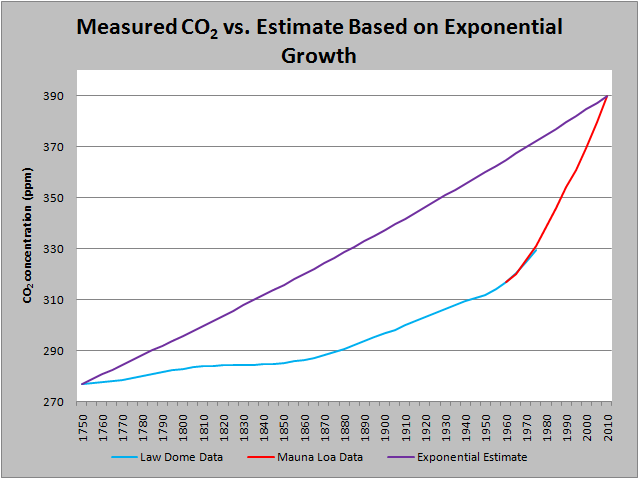The False Allure of Compound Interest
Post on: 10 Март, 2016 No Comment

Wise Bread Picks
You’ve seen compound interest stories. Just save $10 or $50 a week or a month and in 25 or 35 years you’ll have a fortune! It’s not so simple. (See also: Non-Financial Investments )
The compound interest story isn’t wrong. exactly; it’s simply misleading.
It’s misleading for two big reasons. First, because things change. Second, because the huge returns from compound interest are back-loaded they only come at the very end.
Let’s start with a simple example, so we have something specific to talk about. According to my financial calculator, if you invest $218 per month at an 8% return over the course of a 35-year career, you’ll end up with $500,000. Depending on your lifestyle that might or might not be enough to retire on. but it would at least be a tidy contribution to any retirement.
It’s a perfectly reasonable calculation I’m sure lots of people made that exact calculation many times during the 1990s, when people actually were achieving returns like that. I’m sure I made that exact calculation myself.
So what’s wrong with it?
Things Change
First of all, you’ve got almost no chance of getting an 8% return for 35 years. It’s possible to get an 8% return during the 1980s and 1990s it was easy to get an 8% return. But 35 years is a long time. Things change. Over that much time you can expect interest rates to go up and down, you can expect the stock market to go up and down, you can expect inflation to go up and down, you can expect taxes to go up and down.
If you were really lucky, and started your investment program in 1981, you’ll have done very well. Interest rates started out high and then declined gradually for the next 30 years. If you just bought 30 year bonds every time you had enough money to do so, you made huge gains. Except, of course, no one who started investing then would have done so. In 1981 everyone knew that bonds were trash, because we were just coming off a decade of inflation rates so high that bond investments lost huge amounts of money in real terms.
If you’d invested in stocks you’d have done even better, at least until 2001 or so. The stock market soared! In the dotcom boom, any reasonably diversified stock market investment made 20% returns for three years in a row! Except, of course, after the dotcom crash the stock market went sideways for a decade, and then in the panic of 2008 lost 40% of its value in one year.
If you were just starting to invest in 1981, you’d probably have just put your money in a money fund. After all, they were paying 14%! And they provided great inflation protection, because rates went up when inflation went up! Except, of course, when inflation went down the rates went down. Nowadays you’re lucky if you can get 0.8%.
Another place you could have put your money in 1981 was gold. Gold looked pretty good right then over the previous decade or two it had run up from $35/oz to something like $800/oz. Of course, then it proceeded to collapse and spend most of the next couple of decades at around $300/oz. Now it’s back up to double its 1981 peak. For those of you keeping track at home, doubling your money in 33 years amounts to a return of just over 2%.
Finally, be aware that changes in the return on capital are really the most benign kinds of changes. Over that period of time, you also have to expect major changes in the return of capital. You have to expect that some companies will go bankrupt, leaving their stockholders with returns of zero. You have to expect that some countries will restructure their debt, leaving their bondholders with pennies on the dollar. You have to expect that some currencies will collapse, leaving their holders with nicely printed pieces of paper.
So that’s the first problem. The period of time it takes for compound interest to start racking up those outsized returns is so long that ordinary changes are very likely to invalidate your plan.
Returns Are Back-Loaded

The other problem is that the huge returns from compound interest only really accrue at the very end.
If you stick with the program for the full 35 years, you get your half million. But suppose things go awry. Suppose you have to quit after just 15 years. That’s still a chunk of time, right? I mean, it’s almost halfway, right?
It may be almost halfway, but that does not mean you get almost half the money. In fact, after 15 years all you’re going to have is $75,000. That’s a pretty small fraction of your half million.
In fact, even if you stick it out for 25 years, you’re only going to have $207,000, well under half your goal, even though you’ve stuck to your savings plan for more than two-thirds of the total time.
This back loading doesn’t just make your result terribly sensitive to ending your contributions early, it also makes your result terribly sensitive to the terminal interest rate.
Suppose you stick out the whole 35 years, making every payment exactly as planned. Suppose further that you manage to achieve your planned 8% return for the first 30 years, but your average return over the last five years is only 1%. How much difference does that make? It takes your total return down from half a million down to just $355,000.
So that’s the second problem. It turns out that it’s not good enough to get a good average return over the whole period; unless you get a good return over the last few years, your compound return ends up being crappy.
None of this is to say that compound interest can’t work for you it can. Save and invest and keep an eye on your investments, on the markets, and on the investment climate generally and you can probably expect to make good returns over the long-term. Just be very careful about buying into the story of compound returns too literally.














